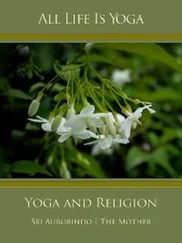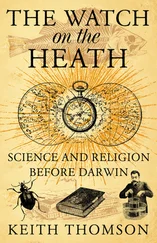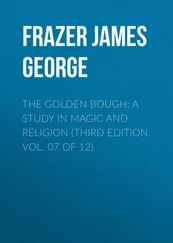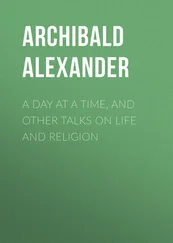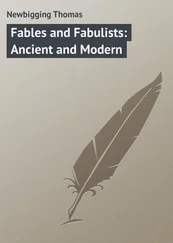Vikernes, Varg - Varg Vikernes - Sorcery and Religion in Ancient Scandinavia
Здесь есть возможность читать онлайн «Vikernes, Varg - Varg Vikernes - Sorcery and Religion in Ancient Scandinavia» весь текст электронной книги совершенно бесплатно (целиком полную версию без сокращений). В некоторых случаях можно слушать аудио, скачать через торрент в формате fb2 и присутствует краткое содержание. Жанр: Старинная литература, на английском языке. Описание произведения, (предисловие) а так же отзывы посетителей доступны на портале библиотеки ЛибКат.
- Название:Varg Vikernes - Sorcery and Religion in Ancient Scandinavia
- Автор:
- Жанр:
- Год:неизвестен
- ISBN:нет данных
- Рейтинг книги:3 / 5. Голосов: 1
-
Избранное:Добавить в избранное
- Отзывы:
-
Ваша оценка:
- 60
- 1
- 2
- 3
- 4
- 5
Varg Vikernes - Sorcery and Religion in Ancient Scandinavia: краткое содержание, описание и аннотация
Предлагаем к чтению аннотацию, описание, краткое содержание или предисловие (зависит от того, что написал сам автор книги «Varg Vikernes - Sorcery and Religion in Ancient Scandinavia»). Если вы не нашли необходимую информацию о книге — напишите в комментариях, мы постараемся отыскать её.
Varg Vikernes - Sorcery and Religion in Ancient Scandinavia — читать онлайн бесплатно полную книгу (весь текст) целиком
Ниже представлен текст книги, разбитый по страницам. Система сохранения места последней прочитанной страницы, позволяет с удобством читать онлайн бесплатно книгу «Varg Vikernes - Sorcery and Religion in Ancient Scandinavia», без необходимости каждый раз заново искать на чём Вы остановились. Поставьте закладку, и сможете в любой момент перейти на страницу, на которой закончили чтение.
Интервал:
Закладка:
light against black;
then will Frigg's
joy (Óðinn) fall.
This verse is connected to Kauna and Svartr. Fenrir (Höðr) kills Óðinn and sends him or one of his eyes back to the grave, when the Sun goes down on Ragnarök and darkness overcomes the light.
54
The swallower is barking loudly,
in front of the cave leaning over the hillside,
the ties/mounts are torn,
hardship is growing,
she knows that the flocks sing,
I look forward, even further,
to the end of the powers,
the destiny of the victorious god.
This verse is connected to Kauna and Svartr. This winter spirits and Hel's shadows flow unimpeded from the underworld.
55
Then comes the mighty
son of the victorious father
the forest (Víðarr) walks
against the fallen animals.
He let the storm's (Loki's) powers
answer
sword to the heart,
then the father is avenged.
This verse is connected to Gebo and Heimdallr. Out there in the forest the winter spirits meet the gods, and with the help of the gifts from the dead, the weapons of the ancestors, which Heimdallr came with on the Winter Solstice. The gods kill Fenrir in the forest, and thus Víðarr (the forest) avenges his father's death and restores balance in nature.
4.9 Hagall's third Group of eight
56
Then came the honoured
the sound's (Jörð's) son (i. e. þórr)
the mind's (Óðinn's) son went
to fight the worm
killed him with courage
the sacred rain of the world in the middle
he clears all halls
in the inhabited world;
walks nine feet
carries to the mountain
the degradation of the worm
infamous refrain.
This verse is connected to Hagalaz and Ægir. The king, who represented Þórr, struck the mistletoe down with a hammer, from where it had been hung in the Yule. He did the same in all houses (halls) where the mistletoe had been hung. The nine feet he walked were the journey from the living room to the burial mound, and Þórr didn't really die, he just had to carry the mistletoe to and put it back in the burial mound, the underworld.
57
The Sun turns black
the Earth sinks into the sea
thrown from the sky
bright stars;
sparks sprays
and the fire is
playing tall and hot
by the sky itself.
This verse is connected to Nauþi and Norns. When the mistletoe was back in the burial mound, the battle continued. The gods charged through the night armed with torches, threw sticks into the fires and let the sparks spurt in the woods. They defeated and chased away the winter spirits.
58
The swallower is barking loudly,
in front of the cave leaning over the hillside,
the ties/mounts are torn,
hardship is growing,
she knows that the flocks sing,
I look forward, even further,
to the end of the powers,
the destiny of the victorious god.
This verse is connected to Isaz and Hel. This winter spirits and Hel shadows are defeated, and can be sent back to Hel, the same way as they had come, through the burial mound.
59
She sees rising
on the other side
land from the sea
green again
waterfalls
eagle flying above
the one who on the mountains
catches fish.
This verse is connected to Jera and Íwaz , Freyja and Skaði. Because of this victory at Ragnarök, one could see that the spring and summer were coming back. Life and strength returned to the world.
60
The spirits find
on the ground on the backwater field
and talks about the old Earth
the destiny of the powers,
and remember there
great things
and the great god's
old secrets.
This verse is connected to Perþi and Váli. The gods rode to the burial mound and sacrificed a horse, on Hel's Horse, the 11 thday of Søkkvabekkr, the month of the goddess of wisdom, Saga, and held a feast. They talked about what had happened and told stories about their deeds in the past.
61
There they will later
strange
golden tablets
find in the grass,
which in the old days
were possessions of their kin.
This verse is connected to Perþi and Váli. It appears that the gifts Heimdallr brought with him from the underworld, were not all delivered at the Winter Solstice, but that some were hidden away until after Ragnarök. Perhaps the gold artefacts were placed in the snow, so that they would not be found until after the snow had melted, in the grass on the burial mound. It was gold after all, and gold would not suffer from such treatment.
62
With no sowing
the fields will grow
bad luck will be better
Baldr will come;
live there Höðr and Baldr
Hrofts (Óðinn's) victory fields
selected by the fallen/chosen gods.
Do you still know enough, or what?
This verse is connected to Algiz and Víðarr. The meadow and the forest got their power back. The flowers peeked up from the Earth, the leaves grew on trees and grass on the ground. Summer had returned.
63
Then the tempter (Freyr) chose
blood wood
and started to build
the double's brothers
wide wind world.
Do you still know enough or what?
This verse is linked to Sowili and the Sun. The light returned to the sky.
64
She saw a hall stand
decorated on the Sun
covered with gold
on the sea of gems;
there the skilled/capable
kings should build
and in the days of life
enjoy.
This verse is linked to Sowili and Sun. The power returned to the Sun. The winners of the bride races – the kings (sorcerers) – should rule the world, wisely.
4.10 Tyr's third Group of eight
65.
Then comes the mighty
to the meeting of the powers
powerful from above
everyone's ruler.
This verse is connected to Tíwaz and Týr. Finally, the king (sorcerer) could rule the world, in peace and harmony. The sorcerer was the ruler of the world, and when the sorcerer became a god instead he also took the role of the world ruler; the Sky god Týr.
66
There comes the dark
dragon flying
sharp, shining from below
from beneath the mountains
clearly we see the claws
fly over the plain
the thrust from the corpse from below
now she will sink down.
This verse is connected to Berko and Jörð. Finally we get a warning that Höðr/Fenrir/Jörmungandr once again will come back from the Earth's womb, from beneath the burial mound, and attack from below. We see the bright mistletoe (the dragon/worm) in the wolf's claws. It is ready to kill Baldr again ...
This is the last verse in Völuspá.
5.0 The Mystery Chamber
5.1 The Hiding Place of the Dead
We have heard much about the burial mound, surrounded by a fence and overgrown with bushes and trees, and we have learned that it and or its interior/exterior is called Íðavöllr ("backwater plain"), Miðgarðr ("the garden in the middle"), Níðavöllr ("the plain below"), Hel ("death", or "hide"), dvergr ("door-opening in the ground"), Niflheimr ("fog world"), Urðarbrunnr ("the well of esteem", "stone well"), Mímisbrunnr ("well of reminiscence") and so on, and we know it from Greek mythology as Hades ("unseen", "hidden") and by other names from other mythologies. The most famous Scandinavian name of this place is perhaps Valhöll.
Valhöll (“hall of the chosen/fallen”, or “hidden chosen/fallen”) was Óðinn's hall. This hall had walls made of spears, the roof was covered with shields and the benches were adorned with mail. Half of all the nobles who died in battle came to Valhöll, after being selected by the Valkyries. The other half came to Freyja's hall, Sessrýmnir ("roomy seat"), most likely a picture of the sky, dedicated to those who were burned on a funeral pyre (a “brising”). Other than those of Jarl's kin (i. e. the blonde, light skinned and fair-eyed men) were not welcome either place, and we recognised here the nobility's contempt for ordinary peasants and slaves, or perhaps rather the racist attitudes of the ancient European.
Читать дальшеИнтервал:
Закладка:
Похожие книги на «Varg Vikernes - Sorcery and Religion in Ancient Scandinavia»
Представляем Вашему вниманию похожие книги на «Varg Vikernes - Sorcery and Religion in Ancient Scandinavia» списком для выбора. Мы отобрали схожую по названию и смыслу литературу в надежде предоставить читателям больше вариантов отыскать новые, интересные, ещё непрочитанные произведения.
Обсуждение, отзывы о книге «Varg Vikernes - Sorcery and Religion in Ancient Scandinavia» и просто собственные мнения читателей. Оставьте ваши комментарии, напишите, что Вы думаете о произведении, его смысле или главных героях. Укажите что конкретно понравилось, а что нет, и почему Вы так считаете.

